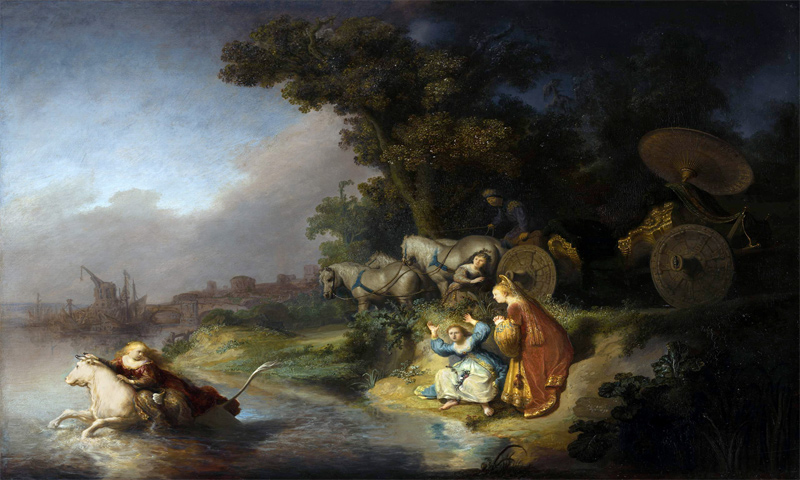The continent that was unnamed five thousand years ago will carry an eternal name of a Syrian princess who came from the sea on the back of an ox, Europe.
According to the Greek myth, the story begins one terrifying night when the daughter of the Phoenician king of Agenor, a beautiful princess called “Europe,” saw a strange nightmare of two women fighting over her and pulling her each towards her side.
As the princess was afraid, she could not fall back to sleep and asked her maids to walk with her on the beach hoping she will feel better.
When the princess was on the seashore, the great God of the Temple of Zeus saw her and he was impressed by the beauty of the Phoenician girl.
Since the gods of Greece excelled in tricks, Aphrodite, the goddess of love, did not miss this scene. Her arrows were directed to the heart of Zeus who leaped from simple admiration to the madness of love.
Zeus did not dare approach the beautiful princess, fearing the fury of his wife Hera who is never tolerant when it comes to jealousy and who dislikes her opponents to the extent of killing.
He eventually had the idea of masquerading in the body of a beautiful ox and approached the girls until Europe saw and touched him. He bent for the Princess to ride him.
Because the ox was very amenable, the princess did not doubt her fate when she sat on his back and the animal headed to the beach.
When the ox was crossing the waves of the sea that became solid ground, the sea God Poseidon appeared accompanied by the water angels and uttered trilling cries of joy on the right and left sides of the kidnapped princess.
As soon as Zeus arrived in Crete, Cyprus, he revealed his personality and asked her to marry him. Their most famous sons became the rulers of the dead world as they were known for their justice.
Then, they both went to Greece and there the Princess wanted to visit new lands. She discovered a continent that had no name before. The people chose the name of Europe in honour of the princess who arrived from the unknown.
On the other side of the Mediterranean, the king of Tyre stood with a sad heart and his fingers pointed to the side where his daughter “Grupa” had disappeared, i.e. where the sun went down in the Phoenician language.
The angry and sad king sent his sons to search for their sister. When they arrived in Greece, they could not communicate with the people because there was no common language. While moving from one city to another in search of his kidnapped sister, Cadmus taught people there the Phoenician language.
All attempts to find her failed and the Syrian brothers eventually dispersed throughout the land. They built cities and civilizations that will become a beacon of human civilization after them.
The story of this kidnap influenced art and literature as many artists painted mythical paintings and others wrote poems about the kidnapped Europe.
When Europeans adopted the Euro as a common currency for their continent, Greece chose to print the image of the Phoenician Princess on the two Euros bill in honour of her memory and France issued a stamp that symbolizes the myth in 1998.

